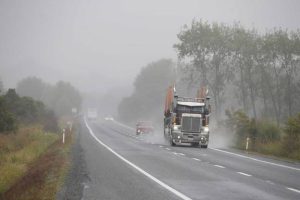 We have all seen a foggy day when it is difficult to see, and no matter how fast you run the fog seems just as thick and just as far away from you. This is because there is no insulating blanket of air above to keep the earth’s heat in. The air closest to the ground cools rapidly, with all the water vapour in the air condensing as tiny floating droplets of water.
We have all seen a foggy day when it is difficult to see, and no matter how fast you run the fog seems just as thick and just as far away from you. This is because there is no insulating blanket of air above to keep the earth’s heat in. The air closest to the ground cools rapidly, with all the water vapour in the air condensing as tiny floating droplets of water.
Visibility is simply how far you can see. In weather terms it is how clear the atmosphere and air are, taking into account fog, mist and urban pollution. Fog and mist are like clouds on the ground. They are made up of lots of tiny water droplets, which is why you can sometimes get wet when walking through fog. When there is a light breeze, clear skies and damp air, moisture in the air condenses near the ground making fog or mist.
Visibility can be estimated using descriptive words such as: good, poor, foggy etc. How far you can see is also used to describe visibility:
Fog – less than 1km
Poor – 1 to 5km
Moderate – 5 to 10km
Good – more than 10km
Different environments around the world experience different levels of fog. People living high in the mountains may see fog all year. The city of San Francisco in North America is famous for its thick mist that moves in from the Pacific Ocean. In the New Zealand we mainly see fog in autumn and winter, but some tropical parts of the world may never have seen fog.
There are two types of fog. Click to find out more:
1. Advection Fog
2. Radiation Fog
Did you know….
After 300 years of coal burning, London had some major problems with smog. Over just 4 days in December 1952, 4000 people died in London because of smog related lung problems. Smog is thick fog caused by lots of soot particles in the air mixing with water droplets. The 1956 Clean Air Act prevented people burning sooty coal in ‘Smokeless Zones’ with smog now largely a thing of the past in the UK. It is still a problem in Third World cities for example Mexico City and Beijing (China).